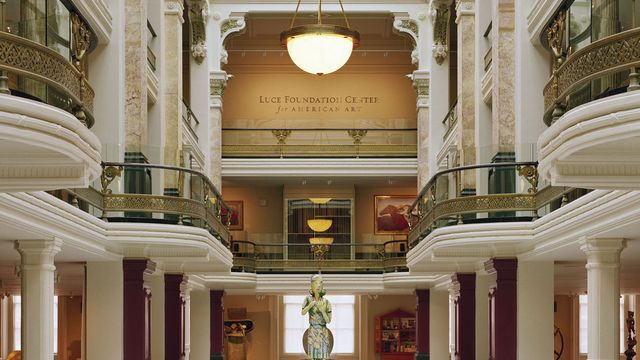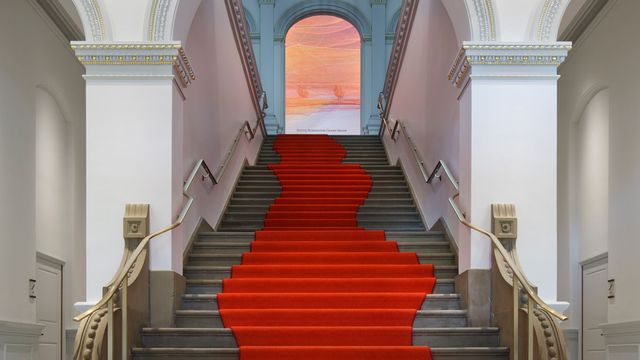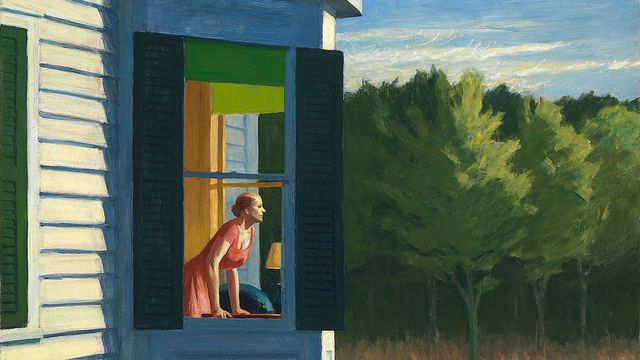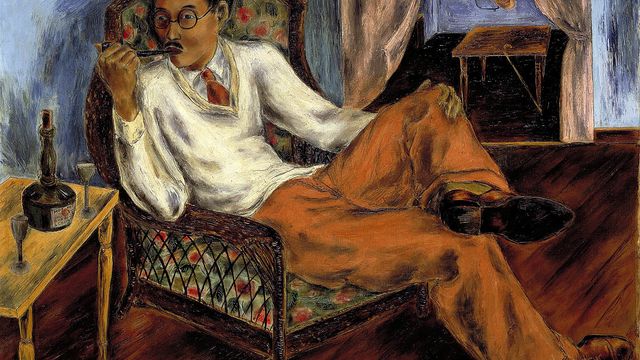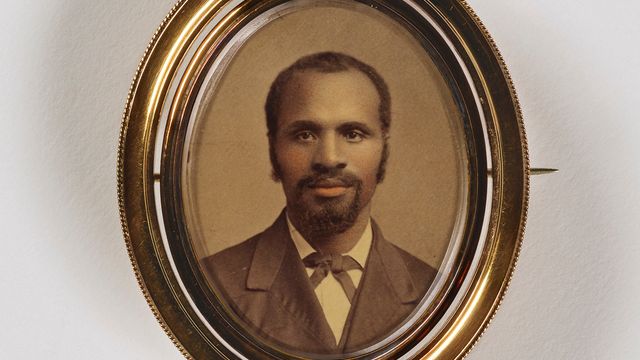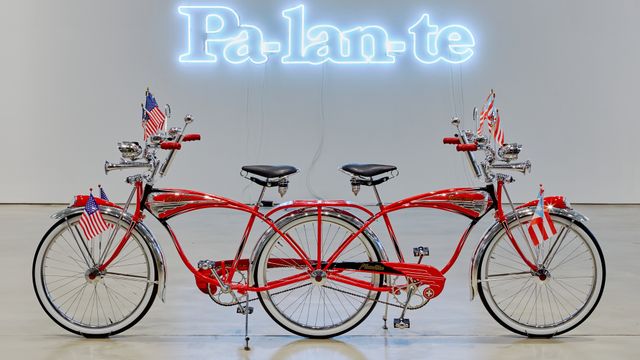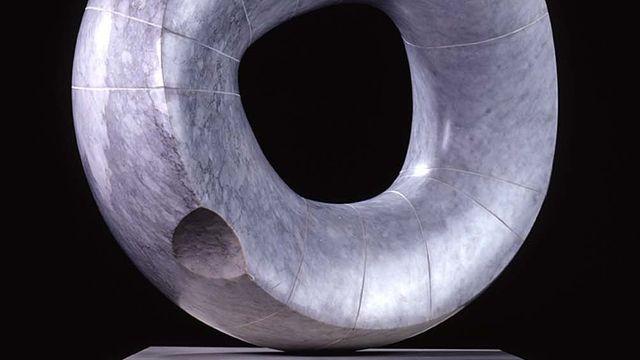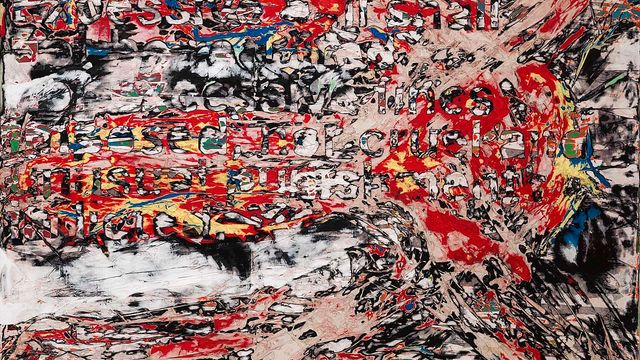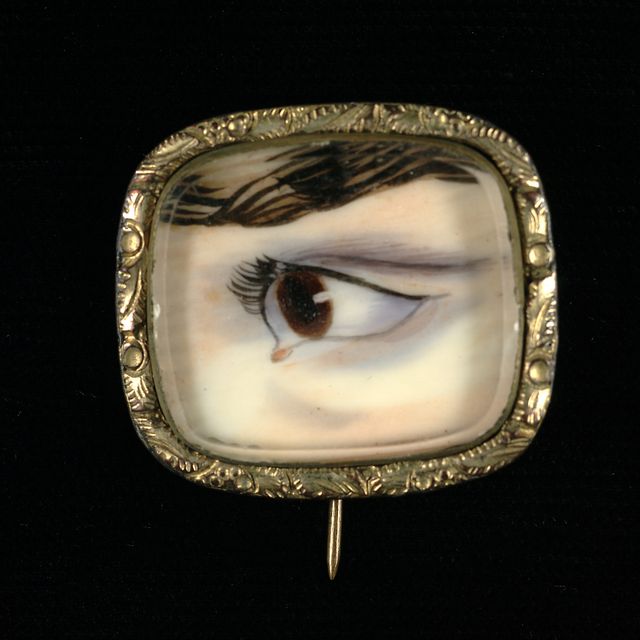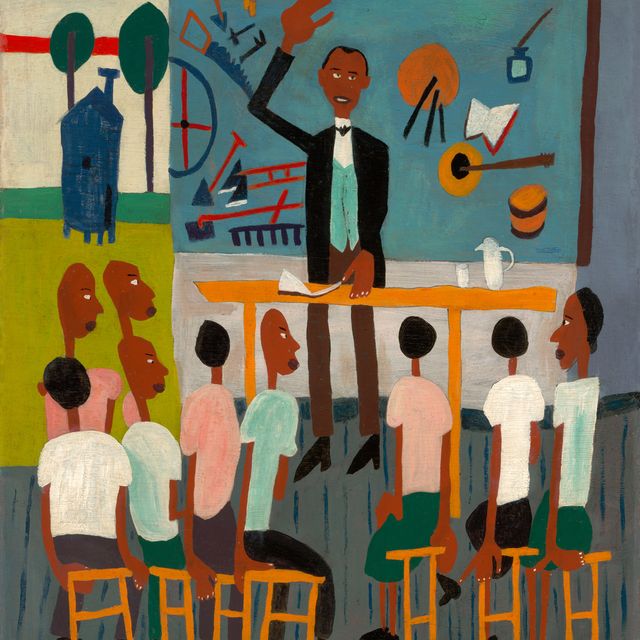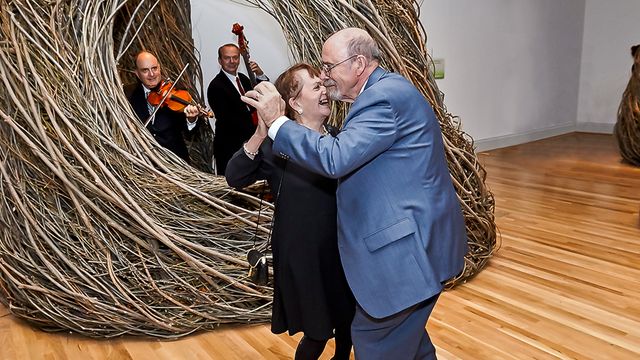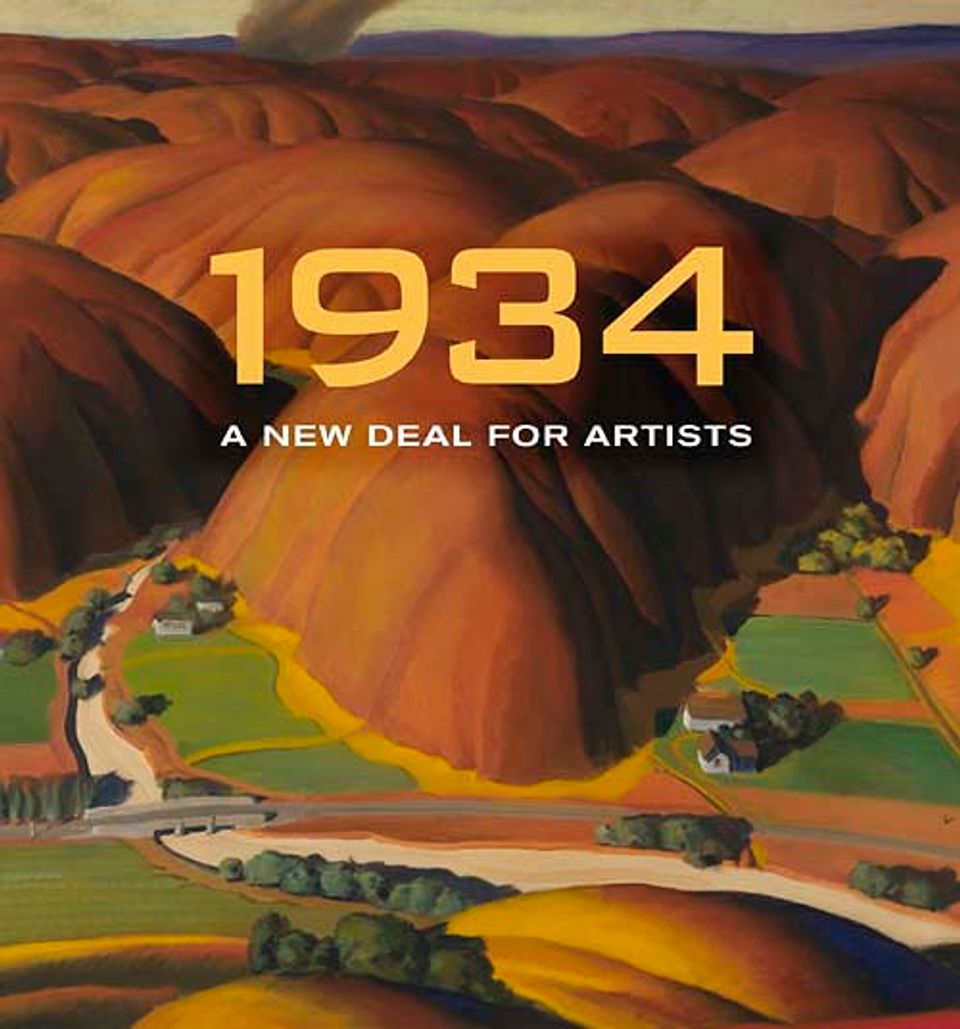Artwork Details
- Title
- Mountain Lions
- Artist
- Date
- 1933-1934
- Location
- Dimensions
- 36 1⁄8 x 42 in. (91.9 x 106.8 cm)
- Credit Line
- Transfer from the U.S. Department of Labor
- Mediums
- Mediums Description
- oil on canvas
- Classifications
- Subjects
- Landscape — rocks
- Landscape — mountain
- Animal — cougar
- New Deal — Public Works of Art Project — New Mexico
- Object Number
- 1964.1.80
Artwork Description
Turner lived in Taos, New Mexico, but was well acquainted with this dramatic, steep-sided Colorado canyon and its animal inhabitants. She had grown up riding horseback around her family's ranch outside the mining town of Gunnison, Colorado. In a song titled "Did You Ever Hear of Gunnison?" the artist described her childhood home as she showed these mountain lions, "way up there, in thin clean air, far away from anywhere, up on the beautiful wester slope, high in the rugged Rocky Mountains."
1934: A New Deal for Artists exhibition label

